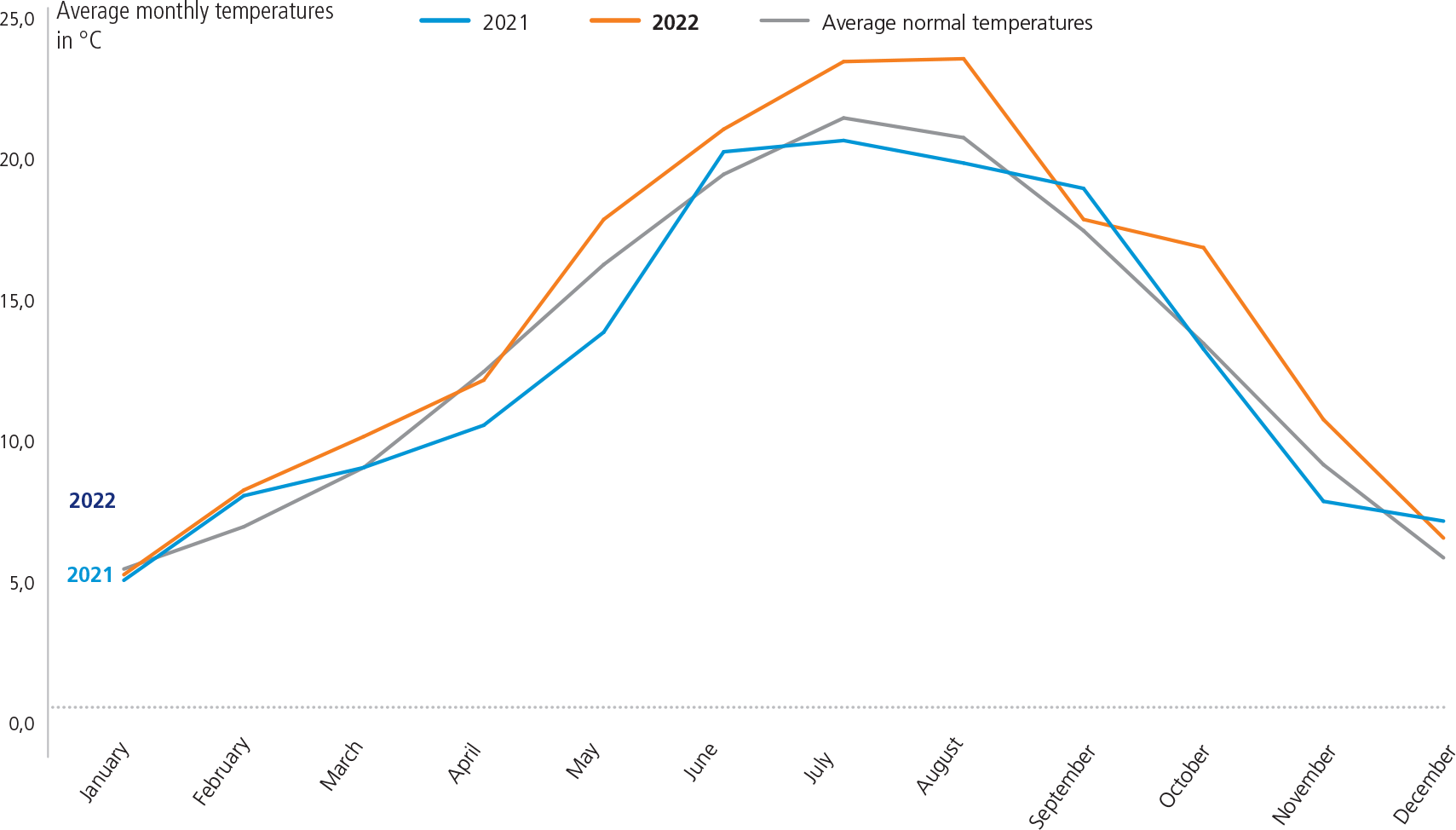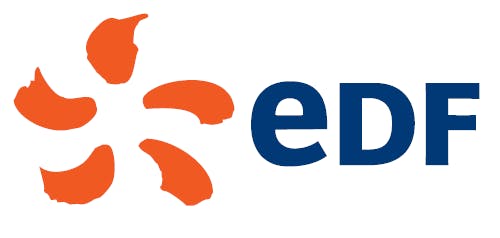5.1.2.3 Sales tariffs for electricity and natural gas
In France, the regulated sales tariffs for electricity were raised on 1 February 2022 by an average +4% including taxes for all consumers in both the residential and business segments. This increase resulted from the French government’s introduction of a tariff cap (bouclier tarifaire) to protect consumers against the exceptional rises in energy prices. Regulated electricity sales tariffs were frozen until the end of 2022 under this measure, and this meant that the tariff increase from 1 August 2022 proposed by the French energy regulator Commission de Régulation de l’Énergie (4.10% excluding taxes for residential customers, and 3.73% excluding taxes for business customers) was not applied.
In the United Kingdom, a cap on the variable electricity and gas tariffs for residential consumers (Standard Variable Tariff – SVT) was first introduced on 1 January 2019. This cap was revised every six months, mainly to take account of market price movements in the previous six months. Due to this approach, the significant increase in supply costs caused by the rise in energy prices since September 2021 was only partially reflected in the SVT, with two successive raises to the price cap (by 54% in April 2022 and 80% in October 2022).
The British energy regulator Ofgem consequently held consultations on the price cap methodology, to ensure that it adequately reflects the costs, risks and uncertainties faced by suppliers. This led to the adoption of stabilisation measures to be applied in the event of excessive price fluctuations, and quarterly revisions of the SVT cap from October 2022.
In view of the extensive increases to the SVT, the UK government also announced consumer support measures including a £400 discount on every household’s energy bill, a maximum annual electricity and gas bill of £2,500, then £3,000 for a standard household (the surplus to be funded by the government), and other aids for the most vulnerable households. A similar mechanism capping wholesale prices for business customers was also introduced for the period October 2022 to March 2023.
In Italy, the average PUN TWA (Time Weighted Average Single National Price) electricity tariff for 2022 was €304/MWh, up by 142.3% from 2021 (€125.5/MWh). This increase is explained by the energy crisis and the geopolitical instability triggered by the war in Ukraine. Over the first nine months of the year, the PUN was noticeably higher than in 2021, before returning to a near-2021 level.
The spot price for gas rose by 165.9% compared to 2021, reaching c€129/smc as a result of geopolitical tensions, growing uncertainty regarding pipeline gas supplies from Russia, and the precarious supply-demand balance.
5.1.2.4 Weather conditions: temperatures and rainfall
5.1.2.4.1 Temperatures in France
With an average temperature of 14°C, 2022 was France’s warmest year since 1980 (1). May and October were particularly warm months (the warmest since 1980). 253 days of the year recorded above-normal temperatures. 2022 thus contributed to warming in France, contributing the linear trend of approximately +0.4°C per decade.
Average monthly temperatures (1) (2) in France

This graph shows the average monthly temperatures ⁽¹⁾⁽²⁾ in France.
2021
January : approximately 6
April : approximately 8
July : approximately 19
October : approximately 14
December : approximately 7
2022
Janvier : approximately 6
April : approximately 11
July : approximately 22
October : approximately 17
December : approximately 6
Average normal temperatures
Janvier : approximately 6
April : approximately 12
July : approximately 21
October : approximately 13
December : approximately 6
(1) The year France began to keep temperature records. Based on 32 cities for the DOAAT and other electricity sector operators.
